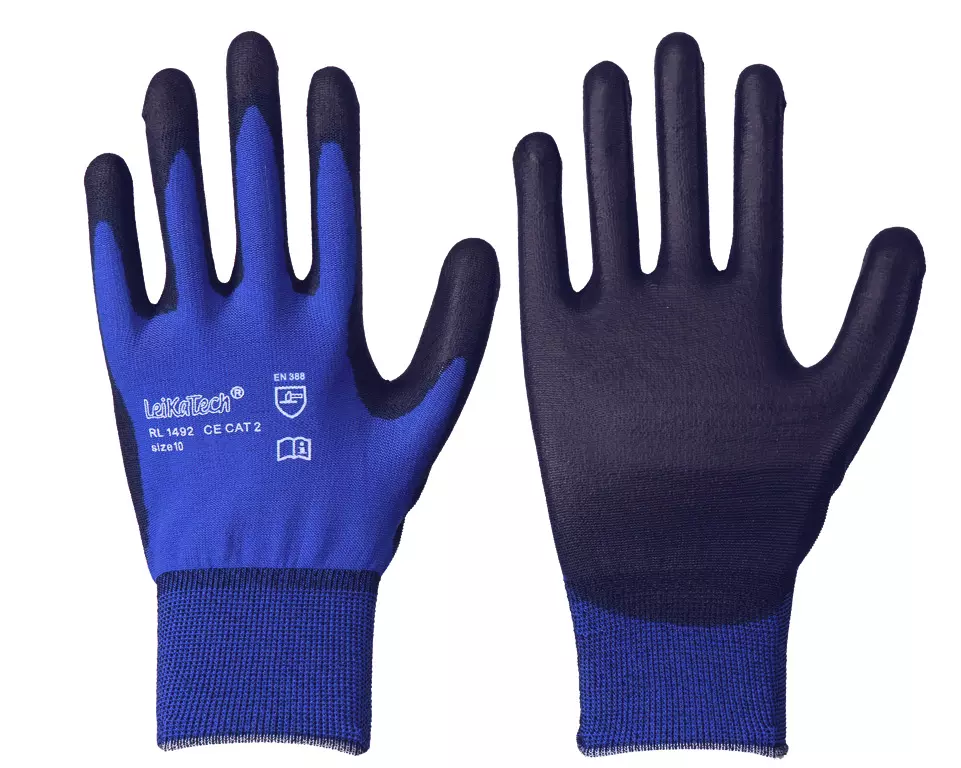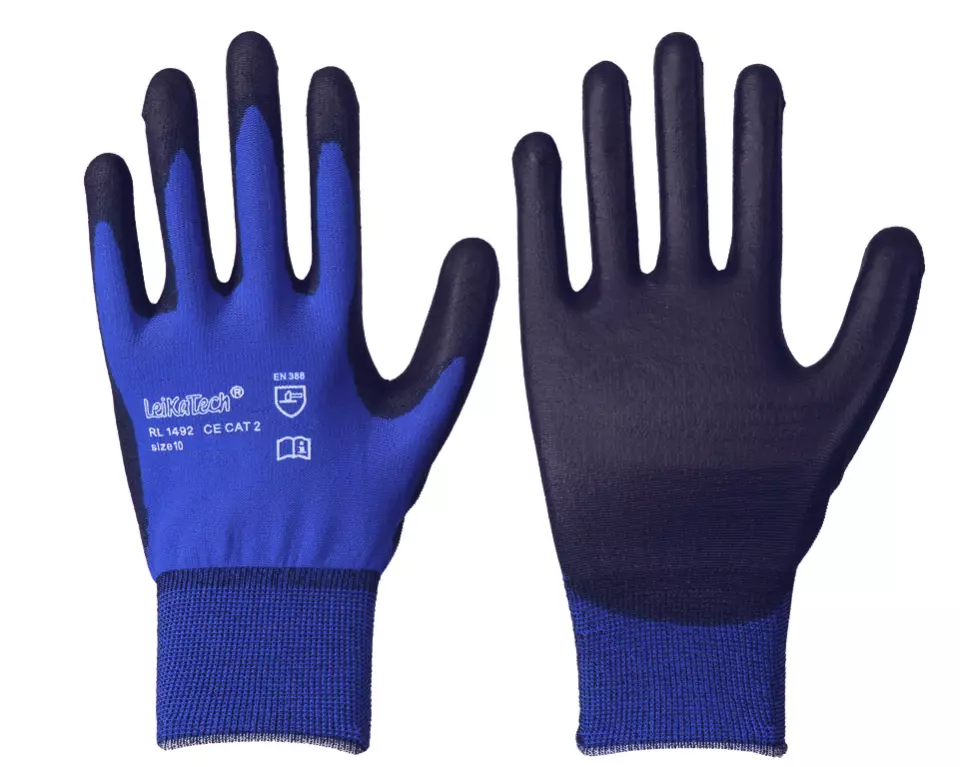
Features You'll Love

Coating Material · Polyurethane (PU)
The substance applied to glove surfaces to enhance grip, durability, and protect...

EN 388 · Abrasion Resistance Level 3
Provides good resistance against scraping, scratching, and rubbing on rough or a...

EN 388 · Tear Resistance Level 4, Puncture Resistance Level 1
Offers the highest level of protection against tearing, withstanding a strong fo...
Richard Leipold
LeiKaTech Ultra-Lite Nylon Fine Knit Glove with PU Coating, 144 pairs
Richard Leipold
LeiKaTech Ultra-Lite Nylon Fine Knit Glove with PU Coating, 144 pairs
5 / 5
143,02 €
Price per 12 packages (144 pairs)
0,99 € / pair
Choose size
Free delivery
Features You'll Love

Coating Material · Polyurethane (PU)
The substance applied to glove surfaces to enhance grip, durability, and protect...

EN 388 · Abrasion Resistance Level 3
Provides good resistance against scraping, scratching, and rubbing on rough or a...

EN 388 · Tear Resistance Level 4, Puncture Resistance Level 1
Offers the highest level of protection against tearing, withstanding a strong fo...
Product description
18gg nylon fine-knit glove with PU coating. The extremely thin and ultra-lightweight glove offers excellent wearing comfort and outstanding tactile sensitivity. It is also suitable for demanding precision work that requires precision.